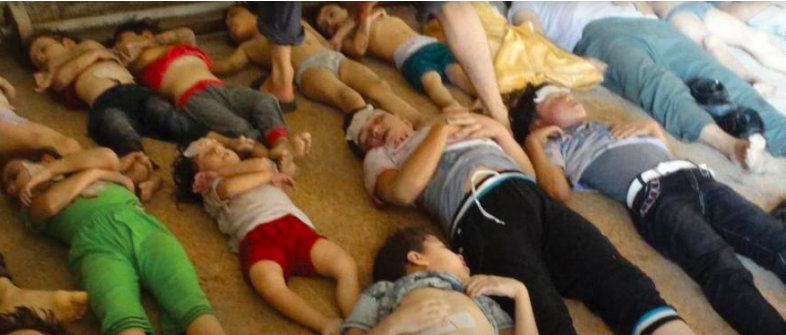
Last year I reviewed the evidence of the chemical attack in Douma, Syria and came away unconvinced by the “false flag” scenario advanced by some critics of U.S. policy. While the U.S. is known to mount “false flag” operations, the evidence from Douma does not support the claim that an attack was staged to blame the Syrian government for someone else’s actions.
The Organisation for the Prohibition of Chemical Weapons (OPCW) concluded the April 2018 attack was perpetrated by Syria and used chlorine to kill dozens of people. One investigator working with OPCW said that the impact crater on the roof the building where the victims lived cast doubt on whether the deadly ordance had been from the air or manually.
Even if the the so-called OPCW whistleblower, Ian Henderson, was correct about the ordance, the question remains, what is the better alternative? If the facts don’t support a Syrian chemical attack, do they support the critics’ scenario of a “managed massacre,” in which the victims were supposedly killed elsewhere and then brought to the building where a munition was found.
The investigative team at bellingcat, the crowd-sourced geolocation site that has examined the case (as well as Russian assassinations and civilian casualties in Yemen), argues that the “managed massacre” scenario is absurd.
The first thing to understand is the scene of the attack: a densely populated urban neighborhood in a war zone.
To give an idea of how dire the situation was, the Douma pocket surrendered less than 24 hours after this chemical attack, bringing an end to fighting in this area. The bombardment was so intense that medical workers could not move through the city. Any potential plan that would have included placing these cylinders manually must have been carried out under this intense bombardment and chaos.
The idea of mounting a “false flag” operation is such an environment is fanciful, bellingcat notes.
In order to create the scene observed in open source materials, the bodies of at least 34 people, including men, women and children, would have had to have been obtained — possibly via mass murder. The victims would have had to be killed in a way that left no obvious visible trauma. All these bodies would have had to be fresh to account for livor and rigor mortis.
Either these people were killed in a way that produced a frothy discharge, or the froth was added later to bodies of people who were already dead. The Russian and Syrian presentation at the UN claimed that bodies were transported in from another location and that nobody in the building was affected by any gas. There are, of course, no images or videos showing any of these 34 bodies being unloaded from the cars they were allegedly transported in. No witnesses interviewed immediately after the attack by journalists or the OPCW reported bodies being transported into this location.
Source: bellingcat – The OPCW Douma Leaks Part 3: We Need To Talk About A “False Flag” Attack – bellingcat
I haven’t seen a convincing answer to these arguments.


